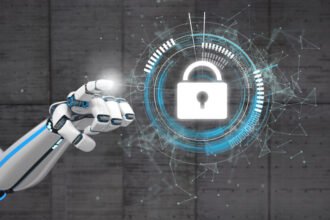Smart home automation has become quite popular in recent years, moving from a luxury for the rich to a staple in many homes. The most popular smart home devices are speakers and thermostats, but a growing number of people are adopting other smart devices like door locks and security cameras.
Residential smart home automation has become a massive industry, and it’s not hard to implement. For those who only want a couple of devices, it’s easy to set up without a professional.
However, for those who want an entire network of connected devices, it’s better to hire a professional. A pro will seamlessly connect everything and recommend the best products.
Smart homes are getting smarter with machine learning
While smart homes are becoming more prevalent, the technology itself is also becoming ‘smarter.’ That’s because smart devices collect and send data back to the company for analysis to fine-tune performance.
Not all smart devices are tools you simply turn on and off with an app on your phone. Some smart devices can ‘learn’ your preferences and run on autopilot by predicting your routines. This is made possible by machine learning.
What is machine learning?
As a component of artificial intelligence (AI), machine learning algorithms collect and use data to imitate the way humans learn. The more a program learns, the more accurate the results.
For instance, a software program using machine learning can figure out when you turn off your lights to go to bed and can be programmed to turn them off automatically at that time every day. If your routine varies by the day, the program can learn those variations as well.
Machine learning algorithms are what power recommendations for videos on YouTube and Netflix. When it comes to smart home automation, machine learning algorithms are designed to make life as convenient as possible by doing most, if not all, of the work.
How smart homes are connected
At a basic level, smart homes are connected over a control network, usually the homeowner’s existing wireless network. Each smart device has some kind of sensor that monitors events (like when the device is turned on or off). Other sensors can be worn to measure vital signs, like the wearer’s heartbeat (think Fitbit). Some sensors can even detect temperature, light, and the presence of a person.
As all of these sensors collect data, the data is sent to a remote server, where it’s used to train machine learning algorithms to predict and respond to certain input to produce a desired result. A simple example of this is having a sensor that beeps when the wearer’s heart rate reaches a certain number of beats per minute.
As more data is collected and processed, the algorithm changes to accommodate what it has learned about the user’s habits and routines. For instance, if the user brews a pot of coffee at 6am, a smart coffee pot can begin the brew cycle at exactly 6am every morning, provided the user sets it up with coffee grounds and water the night before.
Smart automation makes life easier
Everyone wants to make their life more convenient, and that’s why smart home automation is so popular. One of the most useful ways this works is with lighting. A network of smart lights can ‘learn’ when you change the brightness and automatically adjust on time.
Say you start off with 100% brightness in the morning and by 7pm, you turn your lights down to about 70% and then by 11pm you turn them off and go to bed. You won’t have to manually dim your lights because the program will dim them automatically.
Advanced machine learning and conditional triggers
More complex learning can work in conjunction with conditional triggers, too. These triggers and actions are called “smart home scenes.”
For instance, machine learning can teach software to execute various functions only if certain conditions (triggers) are met. For example, if a user turns on the television after brewing their morning coffee, a smart home system can ‘learn’ to turn on the TV automatically right after the coffee begins to brew. In other words, the status of one smart device can determine what another smart device does.
Since smart devices can hold programs like the memory buttons on a radio, users can create multiple scenes and activate them at different times.
Machine learning will drive the next phase of smart home automation
People are no longer satisfied with simply controlling their thermostat with an app on their phone. Today’s automation is driven by machine learning, bringing a whole other dimension to the convenience of smart home automation.











